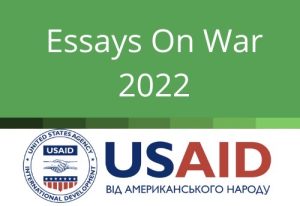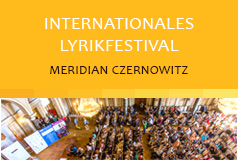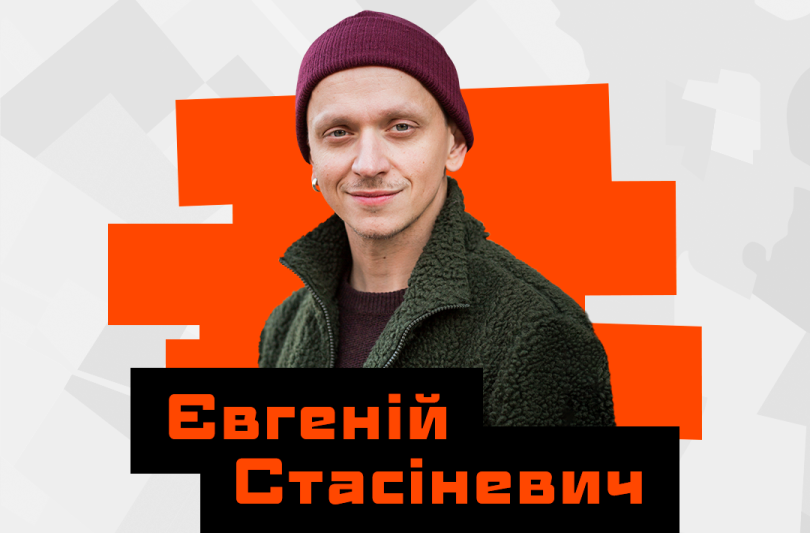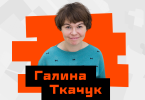State of War
The phrase „state of war“ is a legal term that can easily transform into a vivid image, becoming a metaphor. In the context of Ukrainian culture, there is a tradition of using powerful metaphors to convey one’s position, even when it may not be a crisis situation. This tendency is often reinforced through artistic tropes, which can lead to an exaggeration of the situation.
However, the question arises as to whether this is a good thing or not. In general, what should the role of metaphors be?
In 1896, during the first modern Olympic Games, which were overshadowed by the Khodynka Tragedy, Lesya Ukrainka composed a programmatic poem titled „Poet Under Siege.“ The poem quickly became an iconic representation of existence within Ukrainian culture. Its protagonist is a poet who spends his days „joking with enemies and disaster“ and crafting poems like „light arrows.“ and composes works filled with „“Joy surges in them, grief echoes, / Memories roar in them, a whole sea of dreams, / […] The poet does not know if anyone is listening to him, / He does not hold back his heart and his singing.“ at night. The poet is unaware of his audience and pours his heart and soul into his work.
This reflects an attempt at a compromise time management: serving people during the day and serving the muses at nigh. It was a new way of self-positioning for Ukrainian writers at the time, highlighting the need for personal time. However, a more profound conflict remained: the poet (or poetess) was still expected to serve their own people. They were under siege and had no choice but to do so.
In 1924, the first radio station in Ukraine began broadcasting, coinciding with the ban of the Ukrainian language in Polish institutions and the Nobel Prize in Literature being awarded to the Pole Wladyslaw Raymont. Yevhen Malaniuk composed a poem, now a textbook classic, entitled „A stiletto dagger or a stylus?“ which has become a notorious question among Ukrainian writers regarding their literary activity. Malaniuk expressed his confusion, saying, „I didn’t understand. Ambivalently / Tragic scales waver. / Without throwing a reliable anchor into the depths, / I swim and swim past the shores of beauty.“
This complexity, ambiguity, and tendency to bypass beauty is a characteristic of newly colonized cultures and their emigrant branches. Compared to Lesya Ukrainka’s version, Malaniuk’s work reflects a greater degree of frankness and honesty, with no expectation of reconciling the creative, searching self and the self subordinate to the struggle. The ambiguous nature of this dilemma remains a significant difficulty for Ukrainian writers.
And already in 1955, when the Warsaw Pact was signed and Albert Einstein died, Maksym Rylskyi, whom the principled and categorical Malanyuk loved and, despite the bizarre twists of his biography, appreciated, wrote what later turned into an aphorism: „Human happiness has two wings that are equal: / Roses and grapes, beautiful and useful.“ It is no longer only about culture, but about life itself, and the sharp corners are completely rounded in a Soviet-style to a problem-free wisdom, and yet we understand what debate tradition Maksym Rylskyi continues. This is another allegorical image to indicate that it is necessary to scurry around the perimeter of culture: reconciling and balancing practical and artistic.
Four decades later, in the turbulent year of 1991, marked by independence, referendum, and elections, Lina Kostenko (who, by the way, Malanyuk also admired, having read her early poems) gave a speech with the characteristic title „Genius in the conditions of a blocked culture“ at the international symposium „Lesya Ukrainka and World Culture“ in Lutsk. It was later printed by Literary Ukraine. One of its key theses was that the writer who previously represented a stateless nation, despite all their possible talents, „first of all had to be an educator,“ the one who explains their homeland to the outside world, but also to the „inside“, i.e. interpreting its features to their own people. But somehow it turns out that even in the situation of acquired statehood, such an „additional burden“ does not disappear. A poet (a woman here is also primarily a poet, not a poetess) is „more than just a poet“ (although actually smaller), because she has to perform a lot of additional functions (stealing time from artistic reflection).
The siege, the never-ending conflict between art and politics (where „the stylus was my stiletto / And the stiletto was my stylus“), the intermingling of hybrid grapes and roses, and the suppression of culture – the list of tropes depicting the artist’s situation in Ukrainian culture is far from complete. However, one fundamental aspect stands out: all these images revolve around threats, dangers, confusion, difficult compromises, and hypertension, leading to latent frustration. It’s an existence filled with strain, heavy divisions, and underlying heartburn. We have yet to mention Oleksandr Oles, Yuriy Lypa, Vasyl Symonenko, and Vyacheslav Medved’s Dockworker and Supervisor, not to mention Franko’s The Stonecutters.
Thus, while it may appear to be a state of constant preparation, the reality is that the country has been in a state of war long before February 24. However, upon entering this state of existence, where the war is not solely for specific territories but for survival itself, the pre-existing situation was further emphasized. The starkness of our immediate reality amplified metaphorical divisions.
Ultimately, this did not resolve the issue and only served to worsen it. Do we truly require such potent—and troublesome—metaphors that have the capacity to incite anger and exhaustion, urging us to be always prepared for an unending battle and limiting our cultural and artistic flexibility? „Fight—or do not create.“ The answer appears somewhat apparent.
We need other images and self-descriptive metaphors because such ones have already existed for a long time. We are under their influence, and it is far from unequivocal. Naming structures affect the construction of results; experience lives in words.
Perhaps culture can be defined as „the work that we must do every day.“ While this may sound familiar, it applies to the field of work and professionalism, encompassing competencies, efforts, and results. Maintaining a sense of intensity is important, but not to the extent that people are burdened with heroic and dangerous tasks. Instead, consider it a meticulously crafted landscape, not a city under constant siege. This can be achieved through a controlled and intentional process, even during a state of war.
Translated by Yulia Lyubka and Kate Tsurkan











